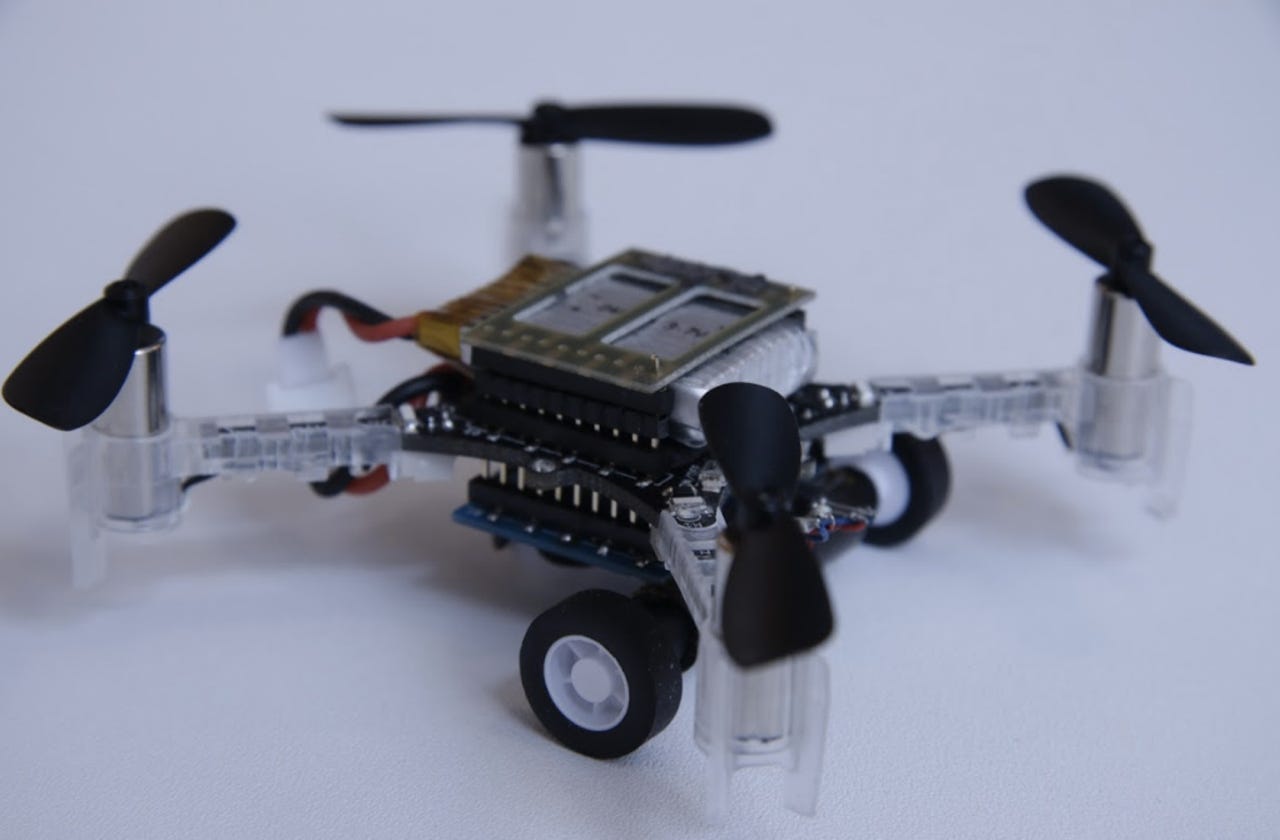MIT develops drone swarms that can drive


Featured
Researchers from MIT's Computer Science and Artificial Intelligence Laboratory (CSAIL) are developing a new system that it says will enable drones to both fly and drive.
Combining aerial and terrestrial capabilities has been a challenge in the advancement of unmanned robotics and drones. Airborne devices have speed and agility, but generally lack the battery power required to travel for long distances. Conversely, ground vehicles are more energy efficient with longer lasting batteries, but are slower and less agile.
To bridge the feature gap, MIT's CSAIL team created a swarm of eight quadcopter drones that can fly and drive through a city-like setting with parking spots, no-fly zones, and landing pads. Path-planning algorithms were used to enable the drones to fly autonomously without colliding, and two small motors with wheels were attached to the bottom of each drone to make them capable of driving.
Ultimately, the team was able to create a vehicle with an energy efficient driving mode and an agile flight mode. In simulations, the robots could fly for 90 meters or drive for 252 meters before their batteries ran out.
While the system is still mostly conceptual, the team envisions unmanned machines capable of flying into hazardous areas like construction sites or disaster zones and then maneuvering through tight spaces on the ground to transport objects or rescue people.
Looking at more futuristic use cases, CSAIL director and senior author Daniela Rus says the system points to another approach to creating actual flying cars, which is to build on years of research in drone development and add driving capabilities to them.
Related stories:
- NASA picks research teams to tackle advances in drone, self-driving car tech
- Defence Force to pay AU$101m for compact field drones
- Flight Flap: U.S. agencies still struggling to regulate drones
- This lightweight underwater camera drone takes you deep beneath the waves
- NASA is developing drones for Mars exploration